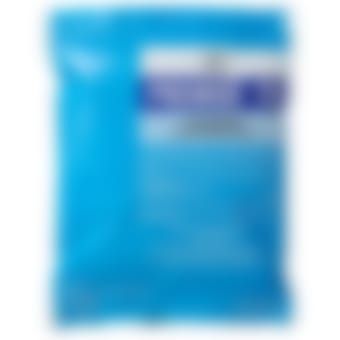Termite Insecticides

Unlock the secret to a termite-free home with DIY Pest Control's premium selection of insecticides. Our carefully curated products offer powerful, long-lasting protection, ensuring your peace of mind. Shop with us and embrace a safer, more effective approach to pest control. Don't let termites threaten your home—take action with DIY Pest Control today.
General Guidelines For Treating Termites In Soil
(Here are some questions to answer before you begin treating for termites with liquid termiticides.)
1. What type of foundation do you have? Do you have slab, basement, crawlspace or some combination of these three?
- If it is a slab, is it a floating slab, supported slab, or a monolithic slab ?
- If it is a basement or crawl space, is the foundation wall made of cinder blocks or poured concrete ?
2. Do you want to treat the entire structure or just a spot treatment in the area where the termites are active?
3. Where are your plumbing and utility lines? Call 811 BEFORE YOU DIG and they will come to your house and mark your utility lines FOR FREE! Let me say right here,"Don't skip this step !"
Exterior Treatment In All Types Of Foundations - Slabs, Crawlspace and Basements
So let’s start with the outside of the structure. Begin by digging a small trench against the foundation. Six inches wide and six inches deep is the most commonly suggested size but don't get too wrapped up in the size of the trench. It only serves to contain the chemical against the foundation. If the trench doesn’t allow any runoff, then it is sufficient.
Once the trench has been dug, dilute the termiticide as per label directions and apply four gallons of the diluted liquid per 10 feet of trench per foot of depth.
Consideration of Depth Per Foot And Rate Of Application
The last part, per foot of depth is important and is often overlooked. It is not a factor if you are treating a slab but can be very important if you are treating a basement or crawl space. If your footing is two feet below the soil it will require 4 gallons X 2 (8 gallons per 10 feet.).
Here is a helpful chart for depths per foot and gallons required:
If the depth of the footing is:
- 1 foot (or less), use 4 gallons per 10 feet
- 2 feet, use 8 gallons per 10 feet
- 3 feet, use 12 gallons per 10 feet
- 4 feet or more, use 16 gallons per 10 feet
Treat A Continuous Band Of Chemical In The Soil Against The Foundation Of The Structure
I suggest blocking or damming the trench with dirt at 10 foot intervals. This creates a series of 10 foot sections and keeps the chemical contained. Now mix four gallons of chemical in a five gallon bucket and pour the appropriate number of gallons into one of the 10 foot sections. Cover it with dirt and move to the next 10 foot section. Repeat this process until all of the trench sections have been treated.
How To Treat Around Patios, Porches and Attached Garages and Drilling
When treating with a liquid termiticide, you are attempting to create a continuous band of chemical in the soil against the foundation of the structure. Sounds easy, but patios, porches, and attached garages serve as obstacles that keep you from getting to the soil against the foundation in order to treat it for termites. The termite chemical needs to be applied to the soil against the foundation under these attached slabs.
The solution to this dilemma is a rotary hammer drill. You can rent a heavy duty rotary hammer drill at most tool rental outlets. Drill ½ inch diameter holes through the concrete until you reach the soil. Space the holes no farther apart than 12 inches and about two to three inches from the foundation. The slab may only be four to six inches thick, but I suggest using an 18 inch drill bit so that you can stand upright while you drill. Your back will thank you!
Remember, you are not drilling deep into the soil. Once you break through the concrete and reach the soil, you have drilled deep enough. The goal is to get the termite chemical to spread from side to side until it overlaps. Apply the termite chemical to the soil under the slabs by using a funnel or a sprayer. Keep in mind that soils are different and the liquid chemical will soak in very quickly in some soils and very slowly in others.
The rate of application is still four gallons of chemical per 10 feet. If your holes are a foot apart, then you'll apply 0.4 gallons (just under ½ gallon) per hole. If the soil is loose and accepts the chemical well, you can place a funnel in the hole and just pour in 0.4 gallons. Once the chemical soaks in, repeat this process for each hole. If the chemical backs up into the funnel, it can be messy and you will need to use a sprayer to apply the liquid. This is a little slower method than using a funnel, but it will be much more manageable. A larger volume sprayer such as the Chapin Compressor Charged Industrial Sprayer 3.5 Gallon #1999 will keep you from refilling as frequently. Once you have treated all of the holes it is time to patch them using concrete, mortar mix, or 1/2 inch plugs designed just for this purpose.
By Ken Martin



















